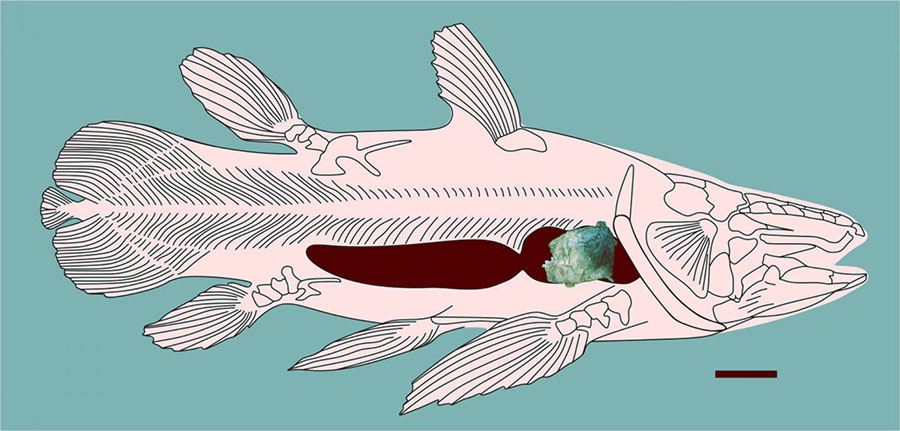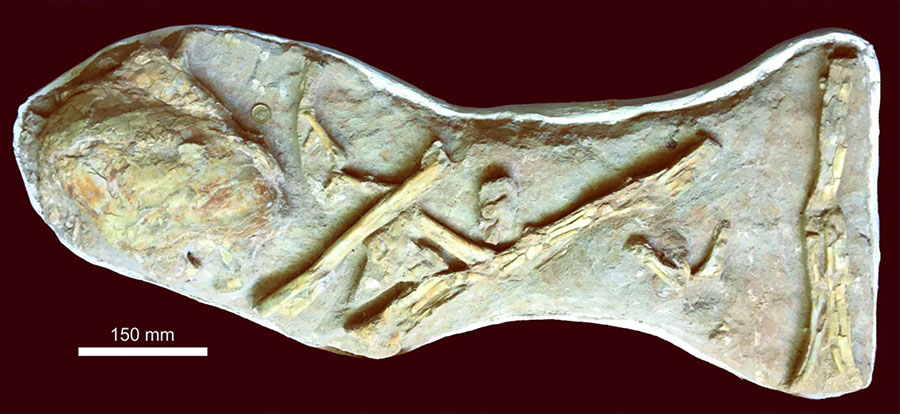Cretaceous-Era Coelacanths Grew As Big As Great White Sharks

Paleontologists in Morocco have unearthed a crushed ossified lung of an enormous marine coelacanth that lived during the Late Cretaceous period, about 66 million years ago.
Coelacanths are a group of primitive deep-dwelling fish closely related to tetrapods, four-limbed vertebrates including amphibians, mammals and reptiles.
They were thought to have been extinct for 66 million years, until the accidental capture of a living specimen by a South African fisherman in 1938.
Coelacanths first appeared in the Early Devonian epoch, diversified a little in the Devonian and Carboniferous period, and attained a maximum of diversity in the Early Triassic period.
During the Cretaceous period, they are known by two families only, the Latimeriidae, which survived to the present with the genus Latimeria, and the Mawsoniidae, which went extinct at the end of the Cretaceous.
The newly-discovered specimen belongs to the latter family, and is the last record of coelacanths before their pseudo-extinction 66 million years ago.
“The thin bony plates were arranged like a barrel, but with the staves going round instead of from top to bottom,” said Professor David Martill, a paleontologist in the School of the Environment, Geography and Geosciences at the University of Portsmouth.
“Only one animal has such a structure and that is the coelacanth — we’d found a lung of this remarkable and bizarre looking fish.”

The fossil was recovered from the uppermost Cretaceous deposits of Oued Zem in Morocco.
It had been embedded in a block of phosphate, backed with plaster and covered in a coating of lacquer, which had caused the bones to turn brown.
It was found next to a pterodactyl which proves the giant coelacanth lived in the Cretaceous period.
“The specimen is also the first record of a marine coelacanth in the Mesozoic of Morocco and the first occurrence of coelacanths in the phospahte deposits of North Africa,” the researchers said.
The large size of the lung suggests the ancient fish estimated at between 3.65 m and 5.52 m (12-18 feet) total body length — substantially larger than modern-day coelacanths, which only grow to a maximum length of 2 m (6.6 feet).
“We only had a single, albeit massive lung so our conclusions required some quite complex calculations,” Professor Martill said.
“It was astonishing to deduce that this particular fish was enormous — quite a bit longer than the length of a stand-up paddleboard and likely the largest coelacanth ever discovered.”
The study was published in the journal Cretaceous Research.
_____
Paulo M. Brito et al. 2021. A marine Late Cretaceous (Maastrichtian) coelacanth from North Africa. Cretaceous Research 122: 104768; doi: 10.1016/j.cretres.2021.104768
Source: www.sci-news.com/








